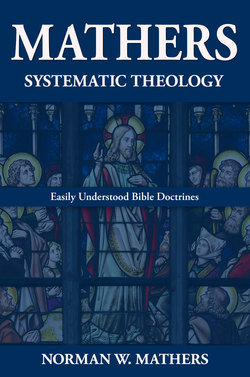Читать книгу Mathers Systematic Theology - Norman W. Mathers - Страница 27
3.3 Historical Theology on the Unity of God 3.3.1 The Early Church On the Doctrine of God.
ОглавлениеTertullian was one of the early figures in the Christian church to use the word trinity. He asserted that the triune God is of one single substance (essence) in three persons and is indivisible (Berkhof 1975:63). However, he was not clear on the role of the members of the Godhead (ibid:63). Berkhof defines the Trinitarian controversy as the Arian controversy (ibid:84). Arius denied the deity of Jesus Christ. He did not believe in the eternality of Jesus Christ. Arius argued that the Father generated the Son so that the Father could create the world by him (ibid:84). Cairns (1974:141-45) calls this period one of theological controversy (325-451 A.D.). Alexander, the bishop of Alexandria, gave a sermon on the Unity of the Trinity. Arius attacked it (ibid:142). The Council of Nicaea met in the summer of 325 A.D. to determine the relationship of Christ to the Father. Arius took refuge in Eusebius, bishop of Nicomedia. This dispute took place in Asia Minor. The unity of the Roman Empire was threatened as well as that of the church. Three hundred bishops of the church attended this council. Arius argued that Christ was a created being (ibid:143). He maintained that Christ was of a different essence (substance) than the Father. Arius believed that Christ was subordinate to the Father. In addition, this means that Christ would not be co-equal and co-eternal with the Father.
Athanasius was the champion of the orthodox view that Christ was co-equal, co-eternal, of same essence (substance) as the Father, and indivisible (ibid:144). The historian, Eusebius of Caesarea, was present. His view was orthodox. The Council of Nicaea was dominated by the emperor Constantine. The Council of Nicaea should not be confused with the Nicene Creed today (ibid:144). The Council of Nicaea affirmed the eternality of Christ and that He was one substance with the Father. The views of Arius were condemned. The Council of Constantinople in 381 A.D. affirmed the eternality of Christ. He was one substance with the Father. These conclusions concerning the Lord Jesus Christ were reaffirmed at Chalcedon in 451 A.D. The Constantinople Creed is known today as the Nicene Creed. Modernism and Unitarianism are related to Arianism. The Jehovah Witnesses do not believe in the eternality and deity of Christ. Macedonius, bishop of Constantinople (341-360 A.D.), held the view that the Holy Spirit was not God. The views of Macedonius were condemned. The Council of Toledo (589 A.D.) affirmed the deity of the Holy Spirit. They added the filoque clause that the Holy Spirit proceeded from the Son as well as the Father (ibid:145).
Latourette (1953:157) concurs that a consensus was reached at the Council of Nicaea in the relationship of Jesus Christ to the Father. It was Athanasius who was the champion of the Nicene position (ibid:157). Aryes (2004:11) presents the concise summary of Florensky on the Council of Nicaea. It was one decision and one announcement that the church had recognized the doctrine of the Trinity and of Christ. Gwynn (2007:3) provides a point of interest that the church grew in status and wealth under the reigns of Constantine. Constantine was supposedly converted in 312 A.D. He reigned from 306-337 A.D. His sons, Constantine II (337-40 A.D.), Constans (337-350 A.D.), Constantius II (337-61 A.D.), favored Christianity. The church continued to grow even under Julian the Apostate (361-63 A.D.).
